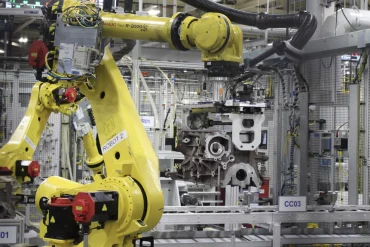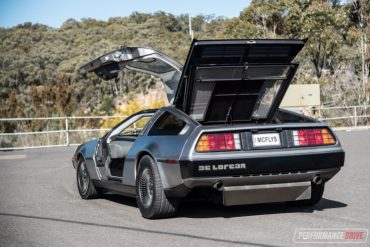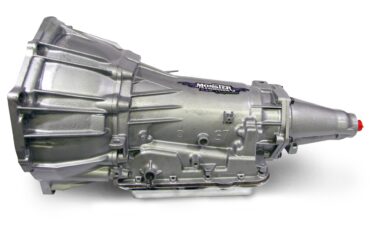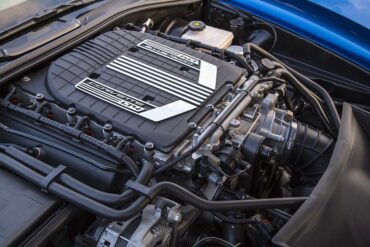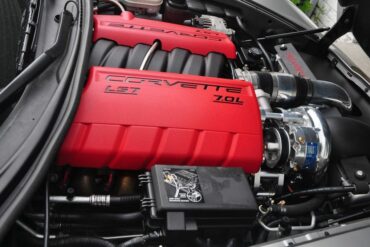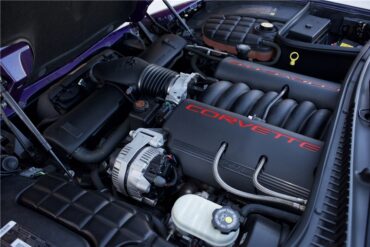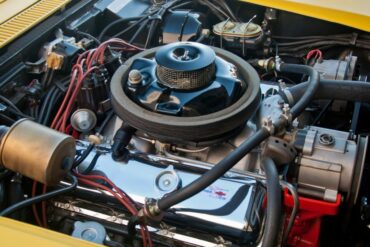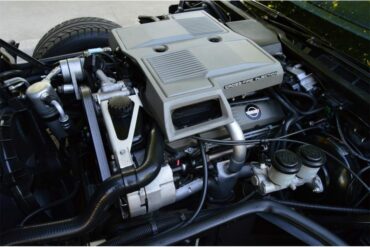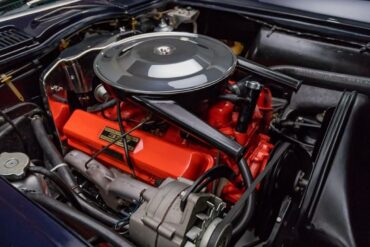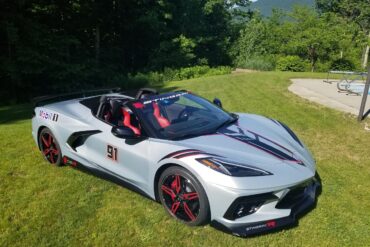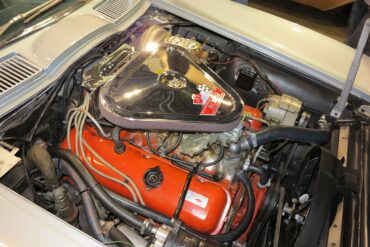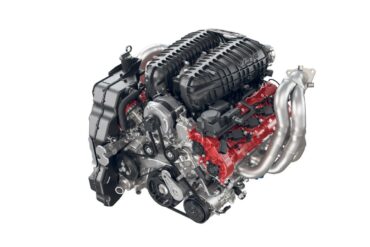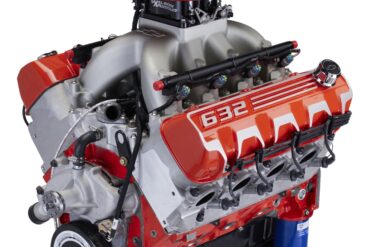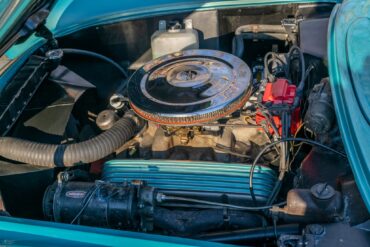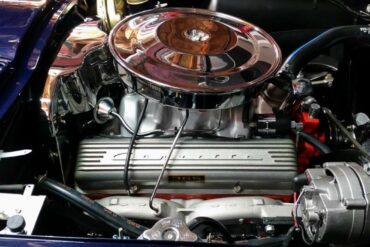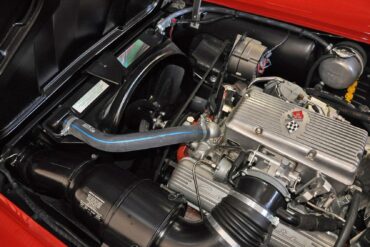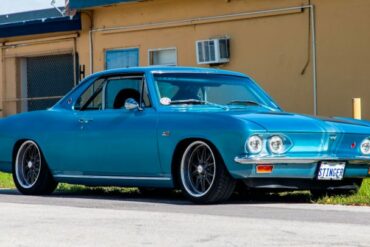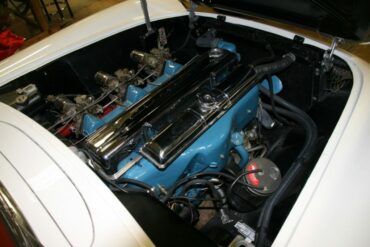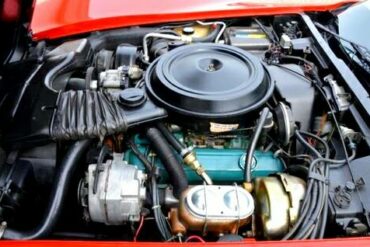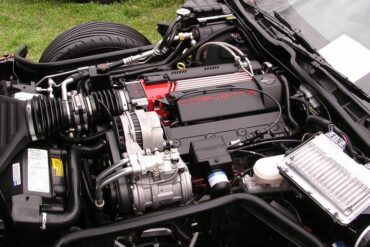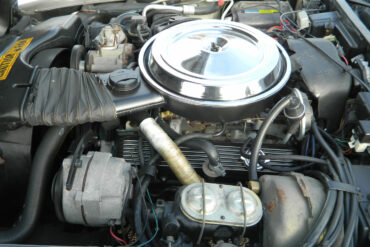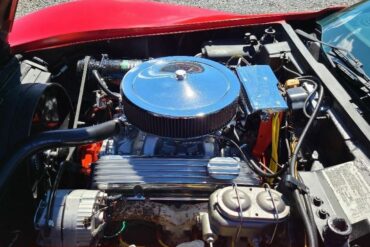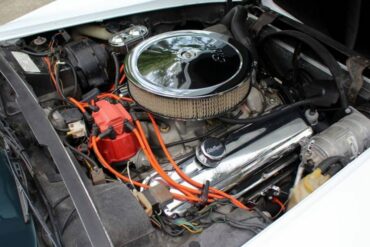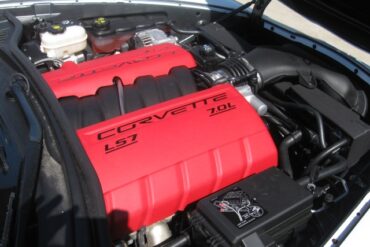The Chevrolet Corvette LS3 is renowned for being one of the most beloved engines in automotive history. It has been...
There’s been so much static trying to get dialed in on the power plant for the next-generation corvette, that this...
Edited by Rex McAfee The arrival of a New Generation: As previously released here on CorvSport, Chevrolet has introduced the...
Food for Thought: Why not Build a Corvette-Powered DeLorean DMC-12 There have been few cars in automotive history more iconic...
Throughout the years, GM design and development staff have outfitted the Corvette with a number of highly potent drivetrain combinations....
The Corvette is America’s darling, a beloved sports car that’s been around for almost seven decades. Its ‘cult car’ status...
Many consider the Corvette’s seventh generation to be when GM’s iconic car finally came of age. It was during this time that the Corvette made some of its most extensive performance gains on the road and in racing. These performance gains can be attributed to the development in engine technology during the C7’s production run. The Corvette was offered with several available powerplants, all of which were potent.
A little while back, we brought to you a feature on the awesome new aftermarket parts offered for the Corvette...
GM’s was on mission to engineer a Corvette that built upon the line’s performance legacy. By all indications, this is a mission that was fulfilled. The Corvette’s engine bay was host to several outstanding powerplants during the C6’s run. From the base 6.0-liter LS2 to the ZR1’s beastly 6.2-liter LS9, the C6-era was never short on performance. Corvette finally caught up to European brands.
When the C5 Corvette was finally unveiled critics were quick to notice a thundering new powerplant. It carried the LS1 designation, serving as the C5 Corvette’s base engine for the duration of the production run. Ironically, the C5 Corvette would only ever leave the factory with one of two individual engines. This included the aforementioned 5.7L LS1, as well as the all-powerful 5.7L LS6, which powered the C5 Z06.
The Vette’s performance dropped significantly during the early to mid-1970s, at the hands of newly implemented federal emissions standards, yet it remained relevant. At a point in which many iconic American performance cars fell by the wayside, the Corvette soldiered on. This served as a true testament to many of the memorable Corvette powerplants that were developed during the C3 era.
The C4 Corvette debuted to a frenzy of publicity and would ultimately enjoy a lengthy run, spanning 13 years of production. During this period, GM installed a number of memorable powerplants. Many of these engines proved to be quite innovative in design, even when saddled with newly-mandated emissions equipment of the era. The following is a comprehensive guide to powerplants of the C4 era.
Introducing the Tremec TR-9080 DCT Automatic Transmission Unless you’ve been living off the grid, or just have an utter lack...
The 327CI small-block V8 was available to consumers in several distinct configurations, all of which produced varying degrees of output. Available in both carbureted and fuel injected forms, the 327CI small-block proved capable of producing anywhere from 250-360 horsepower, depending upon one’s choice of engine code.
When it was first revealed, it is well known that the Corvette C8’s styling was a radical departure from previous...
By the 1960s the Corvette was beginning to hit its stride, especially in terms of performance. While the GM small-block reigned supreme initially, the 1960s would see the rise of the high-displacement big-block, complete with 400-plus horsepower. This was on par with the times, as the horsepower wars of the muscle car era were in full swing. This resulted in several extremely memorable power plants.
Now that the 2023 Corvette C8 Z06’s 5.5L LT6 engine has been revealed with its specifications, it has already been...
First, this engine is the most powerful naturally aspirated, internal combustion engine (by a good margin) of any production Chevrolet small-block ever produced. Boasting a massive 670 horsepower, the LT6 trumps almost all its Corvette predecessors (save for the 2019 Corvette ZR1 engine, which boasted 755 horsepower, but needed a supercharger).
Earlier this week, a video with a soundtrack of something mean was posted to Chevrolet Performance’s Instagram page. It came...
Each Corvette engine is meticulously refined to the point of near-perfection before being greenlit for production. This tradition dates back as far as the Corvette itself—taking root in pre-production efforts of 1952-1953, with the development of the "Blue Flame" inline-six. Amazingly, less than a decade later, consumers could choose to have their Corvette equipped with a 327CI fuel-injected V8.
The 265 cubic-inch small-block served as the jumping-off point for further engine development. Chevrolet spent the following decade perfecting their earlier small-block, which eventually grew in displacement and became a testbed for early fuel injection technology. Further progress was made in 1964, with the release of the L76 V8. This potent small block proved quite reliable while dishing out more than enough horsepower.
In under a decade, GM’s small-block received a substantial boost in displacement while also becoming the standard-bearer for several new internal developments in engine technology. These developments ultimately produced a new crop of small-block powerplants based on Chevrolet’s new 327 cubic-inch engine platform. Of the four 327 cubic-inch small blocks available in 1964, none topped the output of the fuel-injected L84 V8.
A Corvette-Powered 1965 Corvair Heads to the Auction Block While it may be hard to imagine today, the Chevy Corvair...
Often referred to as the “The Blue-Flame”, the Stovebolt-Six’s performance characteristics were anything but “fiery”. The Corvette, in its earliest form, was often ridiculed for being underpowered. Nonetheless, the Blue-Flame Stovebolt-Six served as the Genesis of Corvette power, if only for a brief period of time.
GM found itself facing a critical question of sorts. Should the industry giant forgo the sale of Corvettes in California during 1980 or attempt to rectify a troubling situation. In the end, buyers in California would be able to purchase a Corvette, albeit with a variation of the same engine that was offered in Chevrolet’s passenger cars of that era, the 305 cubic-inch V8.
GM ultimately decided to postpone the release of their fifth-gen Corvette, largely due to budgetary constraints. However, the development of a new powerplant for the aging C4 Corvette was greenlighted nonetheless. This engine carried the LT1 designation, and prove quite capable. The 1992 LT1 would serve as a bridge between GM small-block development.
During many production years, consumers were provided with multiple engine options to choose from. This was especially true during the late 1960s. However, by the late 1970s, GM had begun to significantly scale back the number of production engines offered for the Corvette. This trend peaked in 1981, when only one engine, known as the L81, was offered to buyers.
Finally, in 1973, consumers were left with only three available engine options, two of which were of a small-blocks. The third was the 454 cubic-inch LS4, would only survive for two years, serving as the final big-block to grace the Corvette’s engine bay. By 1975, the Corvette was only offered with one of two engines, of which, the 350 cubic-inch L82 was the most formidable.
Was the 454 cubic-inch LS4 one of General Motors’ most powerful big-blocks? Absolutely not. However, it is historically significant nonetheless. The LS4 served as the end of the road for the big-block Corvette, as America’s sports car returned to its small-block roots. Today, many collectors seek out LS4 equipped Corvettes.
In 2013, a revelation of sorts took place within the Corvette world. General Motors unveiled a “best of both worlds'' type offering, which paired the C6 Corvette, in its convertible form, with an indisputably fearsome powerplant. Beneath the Corvette’s hood, sat a 427 cubic-inch small-block, which carried the LS7 designation.



